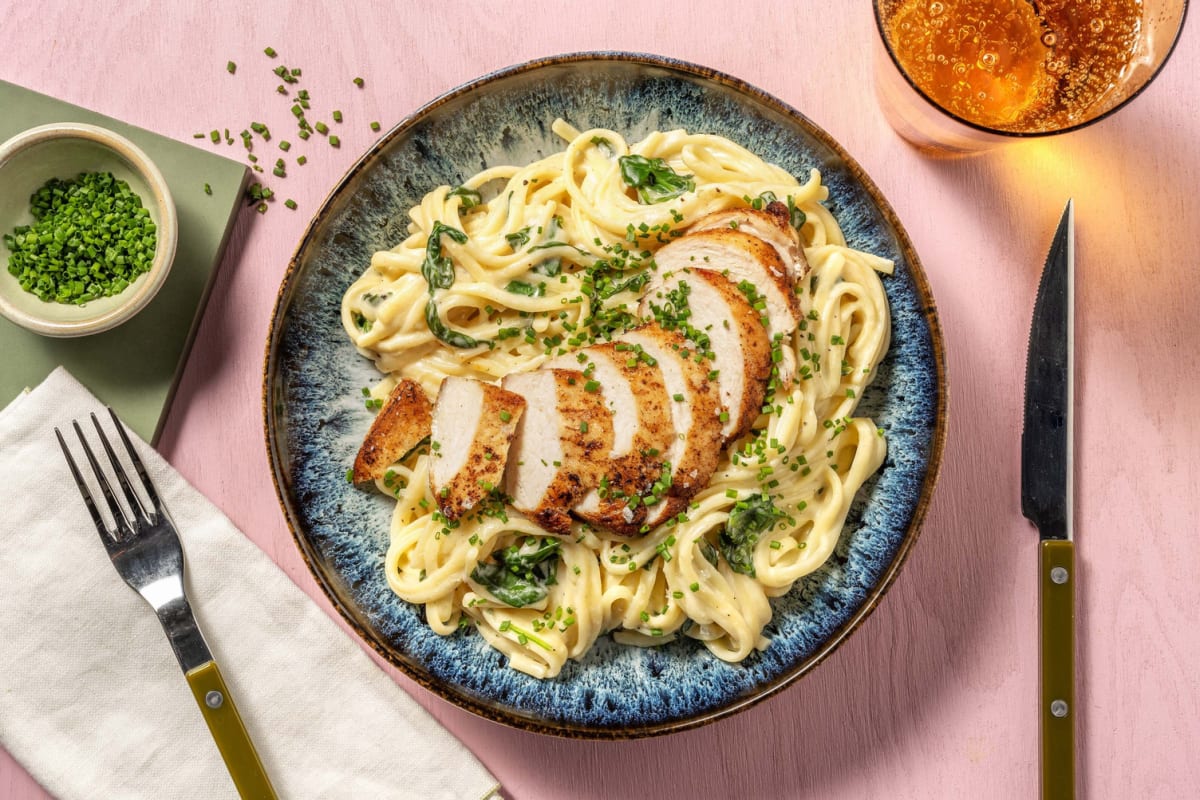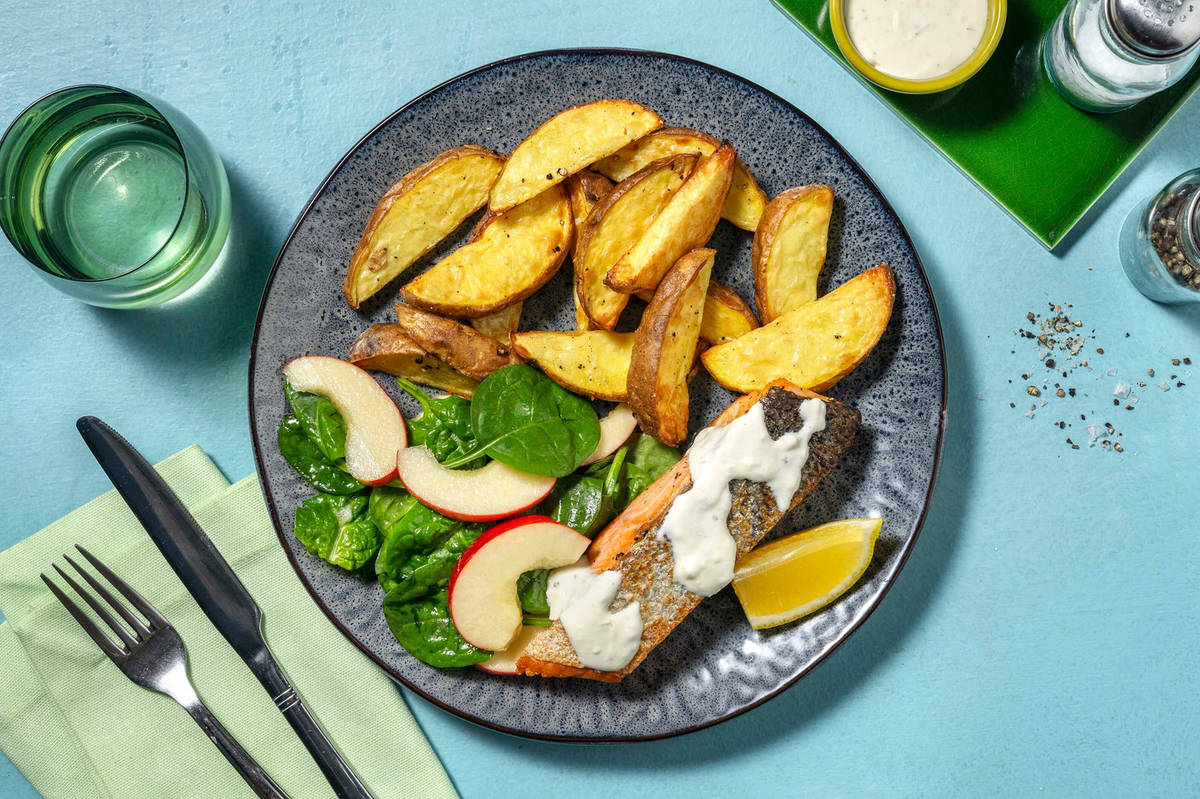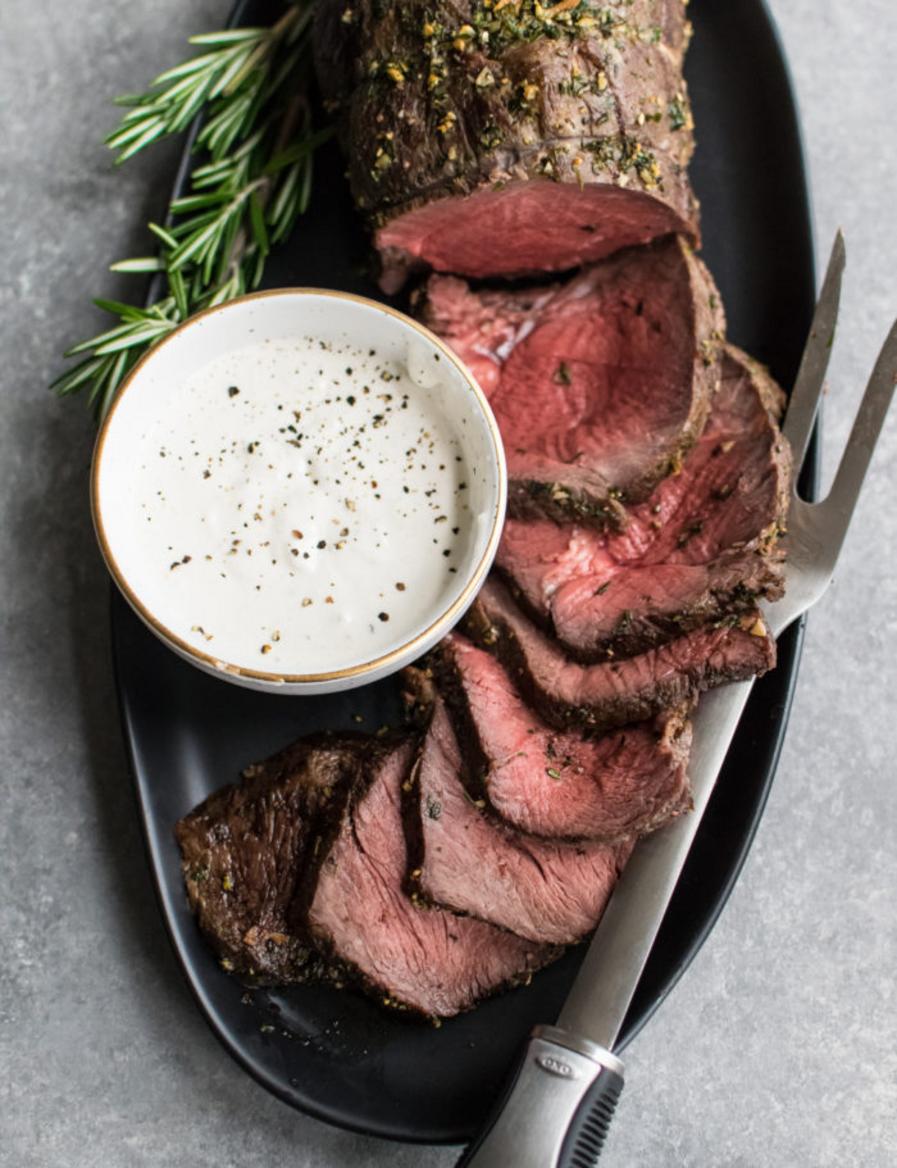Introduction: Larry’s Inspiration
This recipe for Horseradish Chicken Schnitzel with Herbed Yogurt Sauce is a delightful story of culinary collaboration, born from a simple conversation and a generous supply of homemade horseradish. It all started with my boyfriend, Larry, and his incredibly talented father, who grows and prepares a truly exceptional horseradish – a spicy, pungent creation that’s a staple in their family. Larry’s dad isn’t one for sharing, but he always gives Larry a sizable portion, knowing Larry’s fondness for a little kick. One particularly enjoyable evening, while we were enjoying a shrimp cocktail – a classic, of course – Larry’s dad was on the phone, regaling Larry with tales of his latest horseradish harvest. It sparked a discussion, a brainstorming session really, about how to best utilize this amazing ingredient. We were lamenting the fact that horseradish loses much of its flavor when cooked, and Larry, ever the innovator, immediately started bouncing ideas around about crusting something with it. He kept talking about horseradish crusted this and horseradish crusted that, until finally he landed on ‘Schnitzel’ – a name that seemed to perfectly encapsulate the concept. I recall my own thoughts drifting toward the idea, and I distinctly remember saying to Larry, “I think I’ve got it! Yeah, horseradish and like yogurt and probably dill and it’s a schnitzel but like a chicken schnitzel and there’s a sauce, ya know?” thinking about flavor combinations . Of course, Larry’s response was a wonderfully bewildered, “I don’t really understand what you’re talking about but I bet it will be delicious.” chicken schnitzel – and he was absolutely right! It’s a testament to the power of a good idea, a shared appreciation for bold flavors, and a little bit of family horseradish magic. The origin of this recipe is actually quite special because it was a combined effort with Larry and his family. It truly highlights the importance of family and how a simple conversation can give birth to something extraordinary. The process was a wonderful reminder that sometimes the best dishes come from unexpected places and collaborative inspiration. The fact that Larry’s dad even provided the initial inspiration with his homemade horseradish really makes this recipe unique and cherished. delicious horseradish This whole experience further cemented my love of creative cooking and the joy of bringing people together through food.
The Key to Tender Chicken – Yogurt Marinade
Let’s be honest, a truly exceptional chicken schnitzel isn’t just about the breading; it’s fundamentally about the tenderness of the chicken itself. And the secret to unlocking that tenderness lies in the marinade – specifically, the clever use of yogurt. Now, you might be thinking, ‘Yogurt? In a marinade? Isn’t that… unusual?’ But trust me, this isn’t just a quirky addition; it’s a scientifically proven technique. Yogurt, particularly kefir (which is what Carolyn uses here), contains enzymes that act as a natural tenderizer. These enzymes, primarily proteases, begin to break down the proteins within the chicken muscle fibers. Protein breakdown is a slow process, and while it doesn’t happen instantly, the two to three hours the chicken spends marinating in this mixture are crucial. This extended contact allows the enzymes to work their magic, literally starting to unravel the tightly bound protein structures. Think of it like a gentle, controlled massage for the chicken meat. Yogurt’s effect on meat is also enhanced by the fact that yogurt is a liquid. Liquid penetration is significantly greater than with solid marinades, allowing the enzymes to access more muscle fibers. Furthermore, the acidity of the yogurt – courtesy of the lactic acid produced by the fermentation process – further contributes to protein denaturation, making the chicken more susceptible to tenderization. Kefir, with its slightly higher acidity and larger colony of bacteria, is particularly effective because it creates a more robust enzymatic environment. The role of enzymes in meat tenderization demonstrates that the breakdown of proteins is key to achieving that melt-in-your-mouth texture. Don’t skimp on the marinating time; the longer it marinates, the more tender the chicken will become. You’ll notice a distinct difference – the chicken will be noticeably more yielding and easier to cut through, unlike a typical chicken breast which can often be somewhat tough. And remember, the marinade isn’t just for tenderizing; it infuses the chicken with incredible flavor – the tangy, herbal notes of the dill, garlic, and lemon zest all contributing to a deeply satisfying taste. It’s a win-win! Kefir vs Yogurt also shows that kefir has more enzymes.
Making the Delicious Horseradish Sauce
Let’s talk about the heart and soul of this dish – the horseradish sauce. It’s not just a condiment; it’s a vibrant counterpoint to the crispy chicken and the delicate yogurt marinade. This sauce elevates the entire experience, adding a sharp, zesty punch that keeps you coming back for more. Horseradish flavor is surprisingly complex; it’s much more than just ‘spicy.’ The flavor profile includes notes of pepper, root vegetables, and even a slight anise-like quality, depending on the preparation. This sauce is, at its core, a celebration of assertive flavor – and we’re not shy about embracing it. Creating a perfect sauce requires a balance; you want the horseradish to be prominent, but it shouldn’t overwhelm the other ingredients. We achieve this with a careful layering of flavors, starting with the fundamental horseradish – prepared horseradish offers a quicker, smoother result, while freshly grated horseradish provides a more intense, rustic experience. Regardless of which you choose, ensure it’s thoroughly blended – blending the sauce creates a silky smooth texture. The key to a truly exceptional sauce is freshness; use the most recent ingredients possible. A small amount of lemon zest lemon juice brightens the sauce, adding a welcome acidity that cuts through the richness. A touch of white wine vinegar vinegar recipes can also contribute a subtle tang. Don’t be afraid to experiment with other herbs; chives, tarragon, or even a tiny amount of dill would be fantastic additions. A pinch of sugar sugar types helps to balance the sharpness. Ultimately, the goal is to create a sauce that’s both bold and harmonious, a testament to the magic that happens when assertive flavors combine. The beauty of this sauce is its versatility; it’s phenomenal with steak, grilled fish, or even roasted vegetables. Consider adding a splash of cream creamy sauces for an even richer, more decadent experience. Sauce density is crucial – don’t over-dilute! To get started, whisk together the prepared horseradish, yogurt, lemon zest, white wine vinegar, a pinch of sugar, a sprig of fresh dill, and a clove of minced garlic. Taste and adjust seasoning as needed, adding more horseradish for extra spice, or more lemon zest for brightness. The sauce should be thick enough to cling to the chicken but still pour easily. A good rule of thumb is to allow the sauce to rest for at least 15 minutes before serving, which allows the flavors to meld and deepen. This resting period also allows the yogurt to thicken slightly, resulting in a more stable and luxurious texture. Adding herbs to sauces allows the flavors to mingle and create complex, unique flavor profiles. A final note: a little bit of this sauce goes a long way. Start with a small spoonful and add more to taste. Don’t be afraid to make it your own—it’s your sauce, after all!
Step-by-Step Chicken Breading and Frying
Alright, let’s get to the heart of this delicious dish – transforming those tender, marinated chicken breasts into perfectly browned, crispy schnitzels. This part might seem a little intimidating, but trust me, with a few simple steps, you’ll be a breading and frying pro in no time. It all comes down to a systematic approach, ensuring every bit of the chicken is coated beautifully and cooked evenly.
First, prepare your workspace. You’ll need three shallow dishes – one for the beaten eggs, one for the seasoned flour, and one for the Panko breadcrumbs. Having these set up and ready to go is crucial for a smooth operation. Don’t skimp on the flour; you’ll need a good, thick coating to help the egg adhere properly. And make sure your Panko is fresh for maximum crispiness. A little dry Panko can mean a slightly softer result.
Now, gently remove each breaded chicken breast from the marinade. Don’t squeeze out all the liquid – you want to retain that flavorful marinade for maximum tenderness and that gorgeous, rosy hue. Place the chicken breasts on your prepared plate. Next, dip each piece into the beaten eggs, making sure to coat every surface evenly. Let any excess egg drip off before moving on to the next step. This is where a little patience pays off. A completely coated piece of chicken will fry beautifully and ensure an even crust.
Immediately after the egg dip, transfer the chicken to the plate of Panko breadcrumbs. Press the breadcrumbs firmly onto both sides of the chicken, ensuring they are completely coated. Again, take your time and really pack the Panko into the chicken. You’re aiming for a thick, even layer for that signature golden-brown crust. Consider adding a pinch of salt and pepper directly to the Panko for extra flavor – it really elevates the entire dish. Panko breadcrumbs are key here! Once the chicken is fully coated, place it on a clean plate or baking sheet. Crispy chicken is the goal!
Now for the frying itself. Heat about 1/2 inch of canola oil in a large, heavy-bottomed skillet over medium-high heat. It’s important to use a heavy-bottomed skillet because it distributes heat more evenly, preventing hot spots and ensuring even browning. You want the oil to reach around 330 degrees Fahrenheit (165 degrees Celsius) – using a thermometer is highly recommended for consistent results. If you don’t have a thermometer, test the oil by dropping a small piece of bread into it; if it sizzles immediately, the oil is hot enough. Carefully place the chicken breasts into the hot oil, ensuring not to overcrowd the pan. Overcrowding will lower the oil temperature, resulting in soggy chicken. Cook for about 4-5 minutes per side, until golden brown and cooked through. A meat thermometer inserted into the thickest part of the chicken should read 165°F (74°C). Don’t move the chicken around too much while it’s frying – let it develop a nice crust before flipping. Cooking chicken is an art! Remove the fried chicken from the pan and place it on a wire rack to drain any excess oil. This will keep the chicken extra crispy. Serve immediately with the herbed yogurt sauce and a fresh lemon wedge – it’s a match made in culinary heaven. You may wish to make a light salad to accompany the schnitzel, such as a simple green salad. Enjoy this incredible dish – you’ve earned it! And remember, practice makes perfect. Don’t be discouraged if your first attempt isn’t flawless – keep experimenting and refining your technique. The joy of cooking is in the process!
Assembling the Dish: Serving Suggestions
Once your beautifully browned horseradish chicken schnitzel is perfectly fried – achieving that coveted golden-brown crust is key – it’s time to assemble the dish and really elevate the entire experience. This isn’t just about plating food; it’s about creating a symphony of flavors and textures that will tantalize your taste buds. The first thing you’ll want to do is generously spoon that herbed yogurt sauce over each schnitzel. Don’t be shy! The tangy, cool sauce contrasts brilliantly with the crispy exterior and the rich, savory chicken. We’re aiming for a harmonious balance, and the sauce is absolutely crucial in achieving that. balance of flavors is paramount here.
Beyond the immediate pairing of schnitzel and sauce, let’s think about layering the flavors. A generous squeeze of fresh lemon juice over each serving brightens the entire dish, cutting through the richness and adding a pop of acidity – citrus burst is a fantastic addition. A scattering of finely chopped fresh dill and parsley – fresh herbs – not only adds a vibrant visual element, but also intensifies the herbaceous notes already present in the sauce. Consider adding a simple green salad alongside, something lightly dressed with a vinaigrette to provide a refreshing counterpoint to the richness of the schnitzel. salad recipes are a great option.
For a truly sophisticated presentation, arrange the chicken on a bed of lightly dressed baby greens. A few lemon wedges provide opportunities for guests to customize their bite, and a sprinkle of flaky sea salt – sea salt benefits – adds another textural element and a final boost of flavor. Don’t forget to garnish with extra dill sprigs for a beautiful, aromatic finish. This isn’t just a meal; it’s an experience. Think about offering a crusty bread alongside to soak up any remaining sauce – bread pairing is always a welcome addition. Ultimately, it’s about celebrating the simple joy of delicious food, and this horseradish chicken schnitzel with herbed yogurt sauce is a perfect embodiment of that philosophy.
 ,
, ,
, ,
, ,
,
